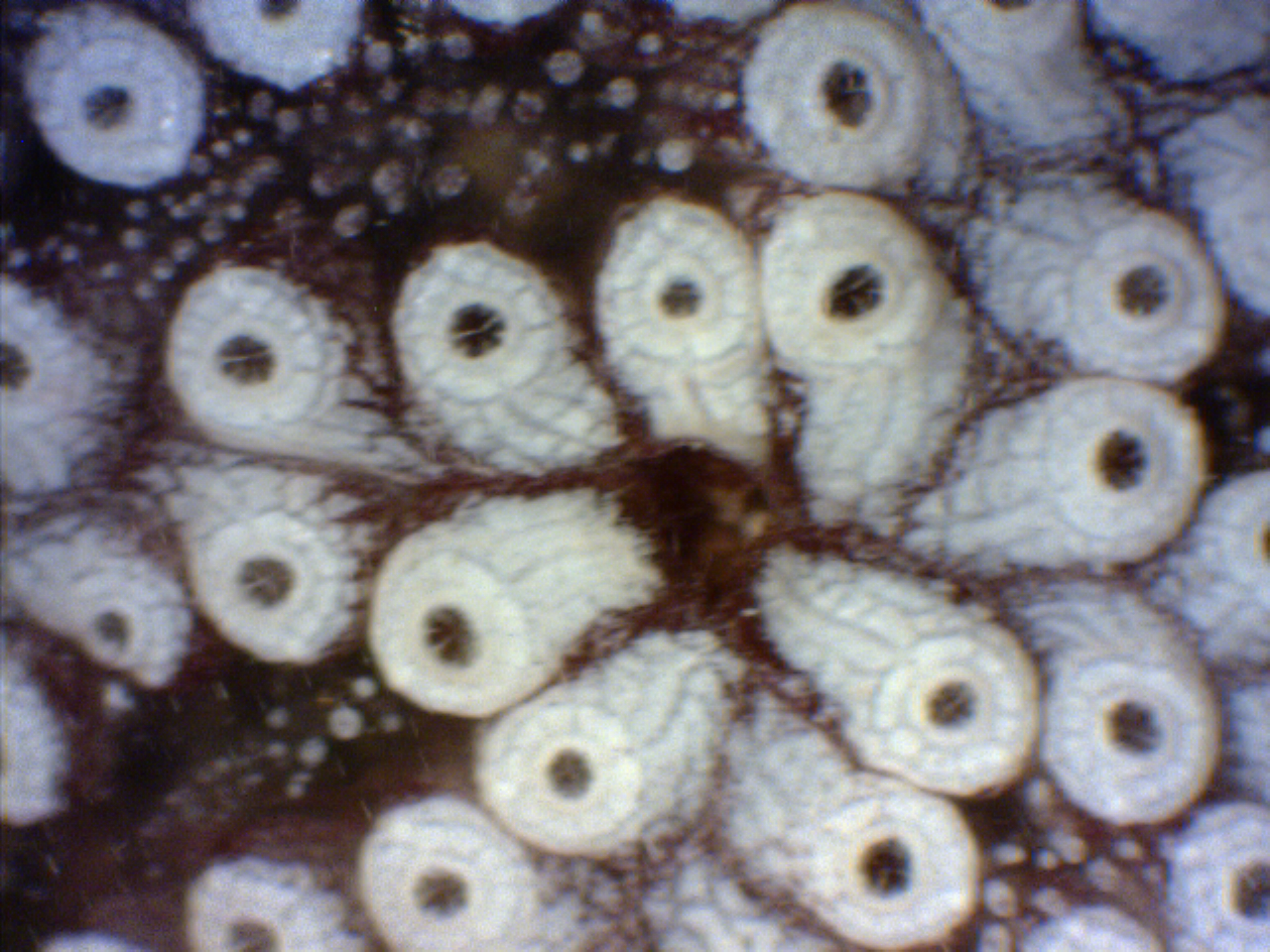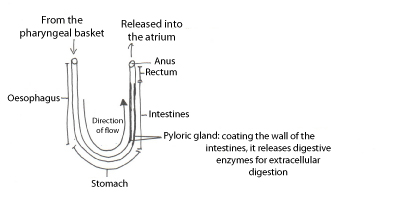Anatomy & Physiology
 Figure 11: Illustration of a cross section diagram of Botryllus spp. Adapted from Ruppert et al 2004. Invertebrate zoology: a functional and evolutionary approach.
Figure 11: Illustration of a cross section diagram of Botryllus spp. Adapted from Ruppert et al 2004. Invertebrate zoology: a functional and evolutionary approach.
Tunic
The zooids of B. leachi are embedded in a tunic that attaches it to the substratum (Figure 11) (Ruppert et al., 2004). The tunic is made up of proteins and a carbohydrate called tunicin that is unique to the phylum Urochordata (Tunicata) (Carver et al., 2006, Pechenik, 2010, Ruppert et al., 2004). Within the tunic lies the circulatory system, a network of vessels that connects the zooids in the colony (Manni et al., 2007, Ruppert et al., 2004). At the bottom of the tunic is the epidermis and beneath that are the basal lamina, a layer of connective tissue that holds the muscles (outer circular and inner longitudinal), nerves, blood vessels and amoeboid cells (Pechenik, 2010, Ruppert et al., 2004).
Siphons
 Figure 12: Zooids of B. leachi with individual buccal siphons and a common cloacal (atrial) siphon.
Figure 12: Zooids of B. leachi with individual buccal siphons and a common cloacal (atrial) siphon.
The siphons are the opening of B. leachi to the external environment. Squirting occurs with the contraction of the longitudinal muscles that compresses the zooid, forcing jets of water out through the atrial siphon (Pechenik, 2010, Ruppert et al., 2004). In B. leachi, the smaller siphon is the buccal siphon that opens into the pharynx (Ruppert et al., 2004), usually only 1-2 mm wide in diameter (Figure 11 and 12). The buccal siphon ends with a ring of buccal tentacles that makes the beginning of the pharynx (Pechenik, 2010, Ruppert et al., 2004). The larger openings in B. leachi colonies are common cloacal (atrial) siphons (Kott, 2005) (Figure 11 and 12). Waste material and larvae are released into the water column through these cloacal siphons that are shared between multiple zooids from a colony (Kott, 2005, Pechenik, 2010, Ruppert et al., 2004).
Pharynx
The pharynx of B. leachi is called the pharyngeal (branchial) basket (Pechenik, 2010). It is covered with small ciliated gill slits called stigmata (Pechenik, 2010, Ruppert et al., 2004). The cilia create a current that bring food and oxygenated water into the siphon for B. leachi. The buccal tentacles, sieve out large particles from the inflowing water before the waster passes through the pharyngeal band that encircle the opening of the pharyngeal basket (Pechenik, 2010, Ruppert et al., 2004). Opposite the pharyngeal band, at the ventral end of the pharyngeal basket is the endostyle (Pechenik, 2010). The endostyle, is homologous to thyroid gland and secretes iodine that regulated metabolism, and produces a net like mucus that traps food particles (Pechenik, 2010, Ruppert et al., 2004).
Digestive tract
 Figure 13: Illustration of the digestive tract of B. leachi.
Figure 13: Illustration of the digestive tract of B. leachi.
B. leachi has a U shaped digestive tract (Ruppert et al., 2004). Figure 13 depicts the different regions of B. leachi 's digestive tract.
Excretion
B. leachi is part of the phylum Urochordata and therefore, it does not have any excretory organs (Ruppert et al., 2004). Ammonia waste is excreted through the body wall by diffusion while uric acid and urates are thought to be stored in various tissues or specialized structures until it is released at the death of the zooid (Ruppert et al., 2004). This process is called storage excretion.
Nervous system
The notochord and the hollow dorsal nerve cord are lost during metamorphosis (Ruppert et al., 2004, Tiozzo et al., 2008) therefore, the colonial matured form of B. leachi does not have a central nervous system. The cerebral ganglion, is the brain of B. leachi (Ruppert et al., 2004). As a colonial ascidian, impulses are transmitted through the tunic vessels to coordinate siphon activity (Ruppert et al., 2004). Matured ascidians lack sensory organs except for the sensory cells on its internal and external surfaces and the buccal tentacles (Ruppert et al., 2004). The larva of B. leachi is sensitive to light as it is negatively phototrophic to help it find a suitable place to settle on (Kott, 2005).
Specific traits
B. leachi has paired gonads on each side of its body wall for being from the order Pleurogona (Ruppert et al., 2004, Satoh, 1994). It is also from the suborder Stolidobranchiata, which means robed gills thus B. leachi also has a folded pharyngeal basket containing longitudinal muscles (Ruppert et al., 2004, Satoh, 1994).
|